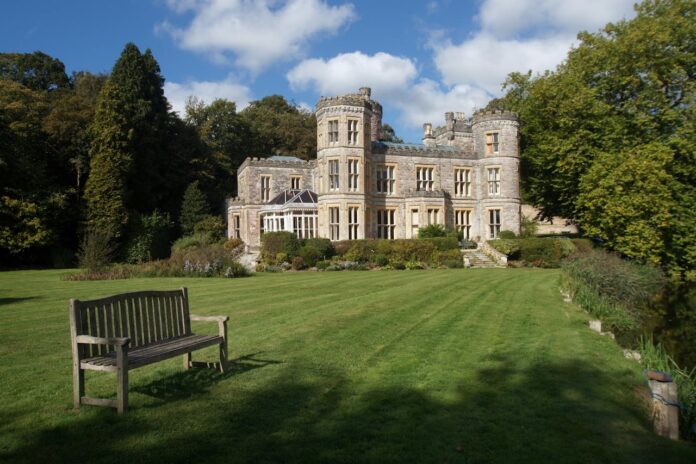Introduction
Winchester, a city rich in history and culture, is renowned for its remarkable architectural heritage. From its iconic cathedral to its charming medieval streets, Winchester’s architecture tells the story of its past, reflecting various periods and styles. However, preserving this heritage presents numerous challenges, while the successes achieved in this endeavor highlight the dedication and ingenuity of those involved.
The Significance of Winchester’s Architectural Heritage
Winchester’s architectural heritage is a testament to its historical significance. The city served as the ancient capital of Wessex and later England, leaving a legacy of structures that date back centuries. The Winchester Cathedral, with its origins in the 7th century, is a prime example of Gothic architecture and a symbol of the city’s ecclesiastical history. Other notable structures include the medieval Great Hall, home to the legendary Round Table, and the Victorian-era Guildhall, showcasing the city’s evolution through different architectural styles.
Challenges in Preservation
Aging Structures
Many of Winchester’s historical buildings are centuries old, making them susceptible to the ravages of time. The natural aging process can lead to structural weaknesses, material degradation, and other forms of wear and tear. Preserving these aging structures requires meticulous care and expertise, often involving the use of specialized techniques and materials to maintain their integrity.
Environmental Factors
Environmental factors such as weather, pollution, and climate change pose significant threats to Winchester architect heritage. Moisture from rain can lead to the growth of moss and mold, damaging stone surfaces. Pollution can cause the corrosion of building materials, while climate change brings unpredictable weather patterns that can exacerbate these issues. Addressing these environmental challenges necessitates ongoing maintenance and the implementation of protective measures.
Modern Development Pressures
The demand for new development in Winchester can clash with the need to preserve its historical character. Balancing modernization with preservation is a delicate task. While new infrastructure is necessary for the city’s growth and economic vitality, it must be carefully planned to ensure that it does not compromise the integrity of historic sites. This requires collaboration between urban planners, developers, and preservationists.
Funding and Resources
Preservation efforts are often hindered by limited funding and resources. Restoring and maintaining historical buildings is a costly endeavor, and securing sufficient financial support can be challenging. Public and private funding, grants, and community fundraising efforts are crucial for sustaining preservation projects. However, competition for these resources can be intense, making it essential to prioritize and allocate funds effectively.
Triumphs in Preservation
Winchester Cathedral Restoration
One of the most significant triumphs in Winchester’s preservation efforts is the ongoing restoration of Winchester Cathedral. This monumental project has involved extensive work on the cathedral’s stonework, stained glass windows, and interior features. Advanced conservation techniques have been employed to ensure the longevity of this architectural masterpiece. The project has also included efforts to make the cathedral more accessible to the public, enhancing its role as both a historical site and a community hub.
The Great Hall and Round Table
The preservation of the Great Hall, with its famous Round Table, is another success story. Extensive restoration work has been carried out to stabilize the structure and preserve its historical features. This includes the careful conservation of the Round Table, which is believed to date back to the 13th century. The Great Hall now serves as a popular tourist attraction and a venue for cultural events, bridging the past and present.
Adaptive Reuse Projects
Adaptive reuse projects in Winchester have demonstrated innovative ways to preserve historical buildings while repurposing them for modern use. For example, the conversion of historic mills and warehouses into residential and commercial spaces has revitalized these structures, giving them new life and functionality. Such projects not only preserve the architectural heritage but also contribute to the city’s economic and social vitality.
Community Engagement and Education
The active involvement of the local community in preservation efforts has been instrumental in Winchester’s success. Educational programs, guided tours, and public lectures have raised awareness about the importance of architectural heritage and fostered a sense of pride and responsibility among residents. Community-led initiatives, such as volunteer-driven maintenance projects, have also played a crucial role in preserving the city’s historic character.
Heritage Partnerships and Collaboration
Collaboration between various stakeholders, including government agencies, heritage organizations, and private entities, has been key to successful preservation in Winchester. Partnerships with institutions like Historic England and the Heritage Lottery Fund have provided essential support and expertise. Collaborative efforts ensure that preservation projects are well-funded, professionally managed, and aligned with broader conservation goals.
The Path Forward
Looking ahead, the preservation of Winchester’s architectural heritage will require a sustained commitment to overcoming challenges and embracing new opportunities. Continued investment in restoration and maintenance, combined with innovative approaches to adaptive reuse, will be crucial. Embracing technology, such as digital documentation and advanced conservation techniques, can also enhance preservation efforts.
Furthermore, fostering a culture of appreciation and stewardship within the community will remain vital. Engaging residents, especially younger generations, in preservation activities and education can help ensure that Winchester’s architectural heritage is cherished and protected for future generations.
Conclusion
Preserving Winchester’s architectural heritage with the help of top architecture firms in London, hampshire is a multifaceted endeavor that involves addressing numerous challenges while celebrating significant triumphs. The city’s rich history and diverse architectural styles make it a unique and valuable cultural asset. Through continued dedication, collaboration, and innovative approaches, Winchester can successfully navigate the complexities of preservation, ensuring that its architectural legacy endures for generations to come.

